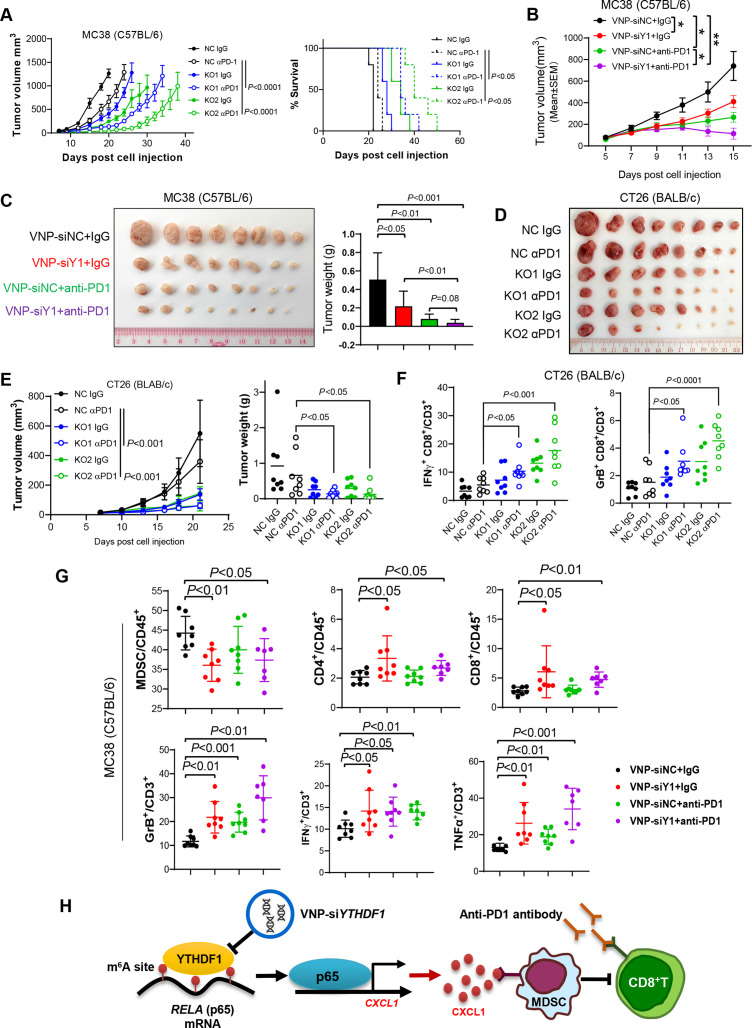Figure 7.
Targeting YTH N6-methyladenosine RNA binding protein 1 (YTHDF1) augmented anti-PD1 blockade therapy in both microsatellite instability-high (MSI-H) and microsatellite stable colorectal cancer (CRC). (A) MC38 cells with or without Ythdf1 knockout were implanted into C57BL/6 mice and treated with IgG or anti-PD1 (αPD1; n=5 per group). Tumour volume (left) and mice survival (right) were presented. Euthanasia was applied when tumour burden was greater than or equal to 1500 mm3 or when the mouse was moribund. (B) Growth curve of subcutaneous tumours from C57BL/6 injected with MC38 and treated with the indicated treatments. Vesicle-like nanoparticle (VNP)-siRNAs were given intratumorally. And αPD1 was given with intraperitoneal injection. (C) Images and weight of the tumours from (B). (D) The indicated CT26 cells were subcutaneously injected in BALB/c mice. The mice were treated with control or αPD1 (n=8 each group). Tumours removed from the mice at sacrifice were shown. (E) Tumour growth curve (left) and tumour weight (right) in (D). (F) Flow cytometry performed with the tumours in (D). (G) Top panel: flow cytometry assessing the proportion of MDSCs, CD4+ T cells, and CD8+ T cells in total CD45+ cells in tumours in (B). Lower panel: flow cytometry assessing functional CD8+ T cells in tumours in (B). (H) Schematic of the m6A-YTHDF1-p65-CXCL1 axis inducing MDSC accumulation and hence suppressing T cell function in CRC (two tailed t-test (C, D, F, G, H); analysis of variance test (A, C, F); long-rank test (A)). siY1: siYTHDF1. GrB: granzyme B.

